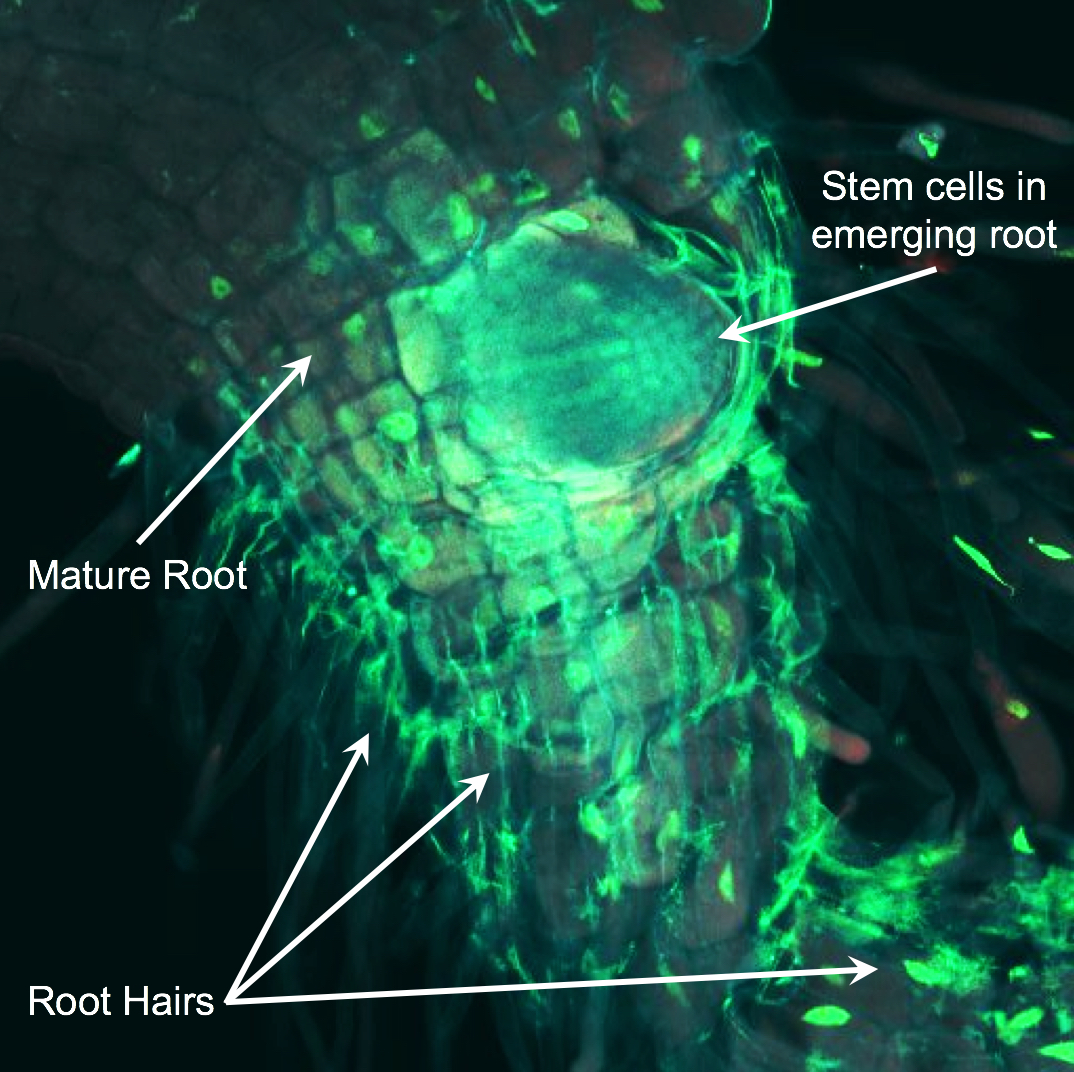The Dickinson Lab works at the intersection of plant biology and chemistry to understand how small molecules pattern developmental decisions.

Discovering small molecules that regulate root development
In this image, a new root with active stem cells is emerging from mature root tissue. GFP is illuminating the nuclei in each cell, including the elongated root hairs. Small molecules are known to regulate virtually every developmental decision made in roots, but our work suggests that are still many undiscovered small molecule regulators

Understanding how stem cells are patterned
This video shows some of the dynamics of root development. This root is expressing DR5:LUCIFERASE, a reporter for one type of small molecule signaling. Pulses of luminescence indicate sites of stem cell patterning and organogenesis. One major goal of our lab is to understand how cells communicate to make developmental decisions.

Engineering Roots for Agriculture
There are profound implications for root development in agriculture, especially with an increasing world population and worsening climate change. Plants annually absorb 70% of global carbon emissions, however because most of this does not stay in the soil, it is rereleased to the atmosphere. Currently, despite the potential of plants to reduce carbon, agriculture contributes to approximately 4% of global carbon emissions. Even restoring the carbon that has been lost from the soil since the Industrial Revolution would signifcantly decrease carbon emissions. Engineering deeper roots is therefore a key tool to fighting climate change. In addition, deep roots can help plants survive certain types of stress, including drought stress.

